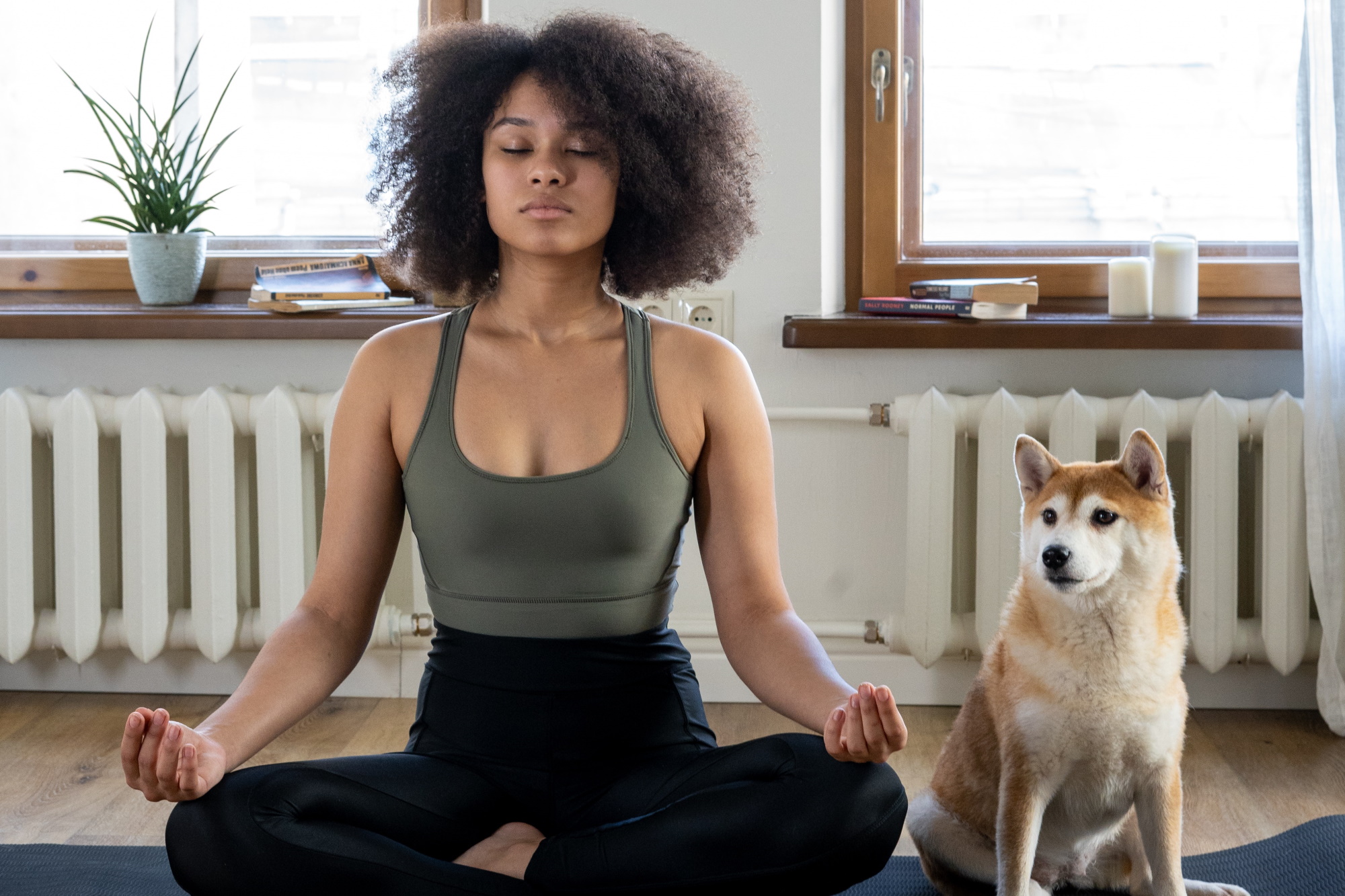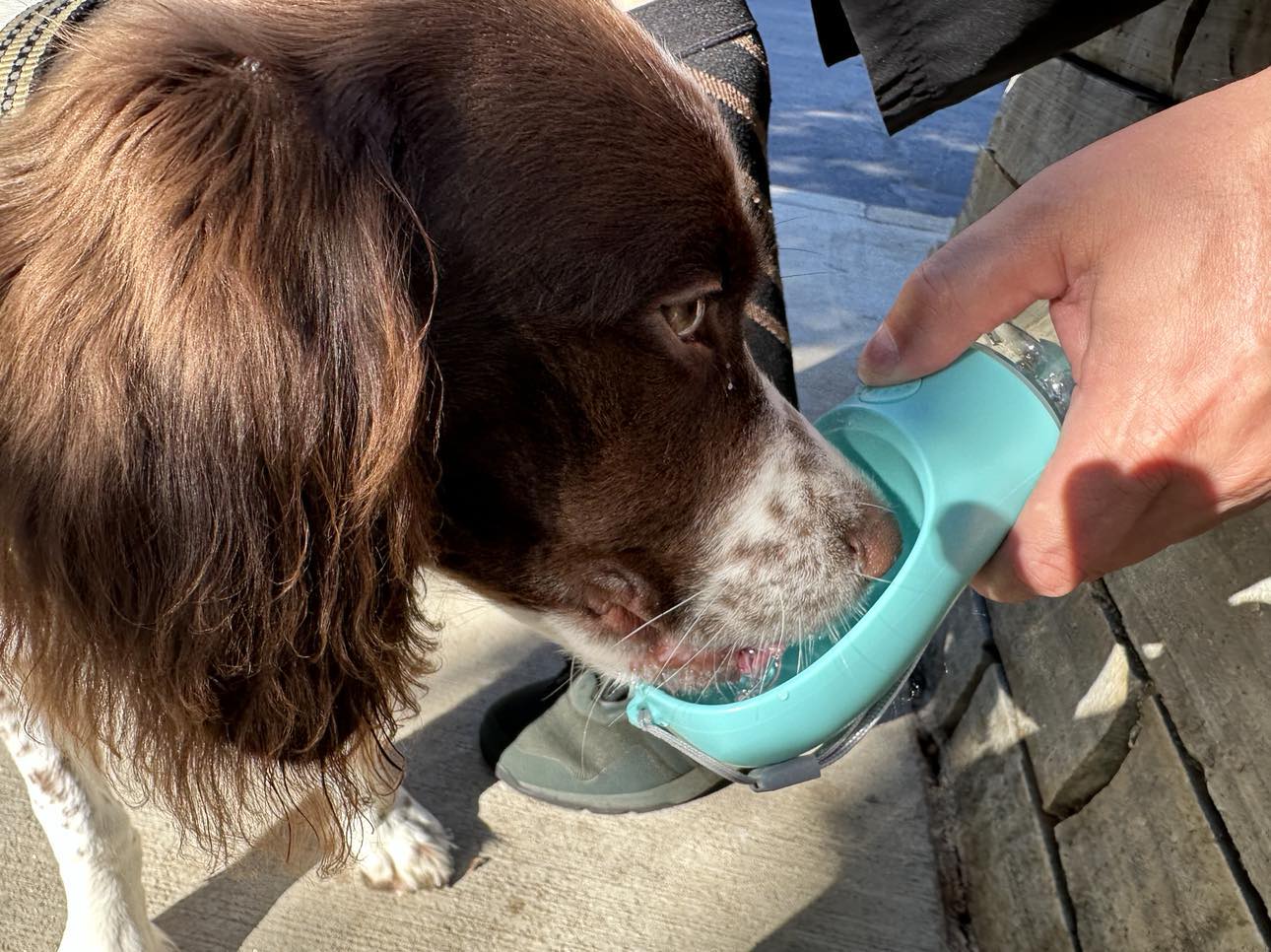When it comes to our furry companions, ensuring their well-being and happiness is of utmost importance. Dogs, like humans, can experience anxiety and stress in various situations, such as separation anxiety, loud noises, or unfamiliar environments. Calming a dog naturally is not only beneficial for their overall mental health but also fosters a stronger bond between dogs and their owners. By utilizing natural methods, we can create a soothing environment and provide effective relaxation techniques that promote a sense of calmness and security for our beloved pets.
Benefits of Natural Methods for Dog Relaxation
Opting for natural ways to calm dogs offers several advantages. Firstly, it reduces the reliance on medications or sedatives, which may have potential side effects or risks. Natural methods are often safe, gentle, and non-invasive, ensuring the well-being and long-term health of our canine friends. Additionally, natural calming techniques can be used in various situations and can be incorporated into the daily routine, promoting a more relaxed and peaceful state of mind for dogs on a regular basis. By employing natural methods, we can tap into the innate ability of dogs to find comfort and relaxation, allowing them to lead happier and stress-free lives.
Understanding Dog Anxiety
Common Signs of Anxiety in Dogs
To effectively calm a dog naturally, it is essential to recognize the signs of anxiety. Dogs may exhibit a range of behaviors indicating their unease, such as excessive barking, panting, pacing, trembling, drooling, destructive chewing, or attempts to escape. Other signs include restlessness, decreased appetite, aggression, or withdrawal from social interactions. Recognizing these signs allows us to address the underlying anxiety and implement appropriate calming techniques.
Causes and Triggers of Anxiety in Dogs
Understanding the causes and triggers of anxiety in dogs is crucial for developing effective calming strategies. Common causes of anxiety can include separation from their owners, fear of loud noises (such as thunderstorms or fireworks), past traumatic experiences, changes in routine or environment, or specific phobias. Identifying the specific triggers enables us to tailor our approach to address these anxieties directly.
By gaining insight into the signs and causes of anxiety in dogs, we can take proactive steps to alleviate their distress and create a more peaceful and relaxed state of mind. Calming dogs naturally requires a comprehensive understanding of their individual needs and anxieties, which in turn allows us to provide the most effective and appropriate solutions.
Environmental and Lifestyle Modifications
Creating a Peaceful and Secure Environment
One of the fundamental steps in calming a dog naturally is to create a peaceful and secure environment. Dogs thrive in a calm and predictable setting, so providing them with a safe space can significantly reduce their anxiety levels. This can be achieved by designating a quiet area in the home where your dog can retreat when they feel overwhelmed. Ensure this space is comfortable, well-equipped with their bed, toys, and water, and away from noisy or high-traffic areas. Additionally, reducing external stimuli such as loud noises or excessive commotion can create a serene environment conducive to relaxation.
Establishing a Consistent Routine
Dogs are creatures of habit and thrive on routine. Establishing a consistent daily routine can help alleviate anxiety and provide a sense of predictability for your furry friend. Aim for regular feeding times, exercise sessions, and designated times for play and relaxation. Consistency in their daily activities creates a structured and secure environment, reducing uncertainty and promoting a calm state of mind.
Providing Mental Stimulation and Enrichment
Mental stimulation is vital for dogs’ well-being and can help redirect their focus from anxiety-inducing triggers. Engaging your dog’s mind with puzzle toys, interactive games, or training exercises not only provides mental stimulation but also promotes a sense of accomplishment and relaxation. Consider activities such as nose work, obedience training, or scent games, which tap into their natural instincts and provide a positive outlet for their energy.
By creating a peaceful environment, establishing a consistent routine, and providing mental stimulation, we can significantly contribute to calming our dogs naturally. These environmental and lifestyle modifications lay the foundation for a serene and stress-free living space, setting the stage for further relaxation techniques to be implemented effectively.
Exercise and Physical Activity
The Role of Exercise in Reducing Anxiety
Exercise plays a crucial role in reducing anxiety in dogs. Regular physical activity helps release excess energy, promotes relaxation, and improves overall well-being. When dogs engage in exercise, endorphins, the “feel-good” hormones, are released, leading to a calmer and more content state of mind. Additionally, physical exertion can tire dogs both mentally and physically, making them less prone to anxiety-inducing behaviors.
Suitable Exercise Routines for Different Dog Breeds and Energy Levels
Different dog breeds have varying exercise requirements, so it’s important to tailor the exercise routine to meet their specific needs. High-energy breeds such as Border Collies or Huskies may require more vigorous activities, such as running or playing fetch, while smaller or less active breeds may benefit from moderate walks or interactive play sessions. Assess your dog’s energy level, age, and overall health to determine the appropriate duration and intensity of exercise they require.
Incorporating Interactive Play and Mental Challenges
Exercise doesn’t have to be limited to physical activities alone. Incorporating interactive play and mental challenges can provide a well-rounded approach to calming dogs naturally. Engage in activities that stimulate their senses, such as hide-and-seek games, puzzle toys, or obedience training sessions. These activities not only tire them physically but also provide mental stimulation, diverting their attention away from anxiety triggers and promoting relaxation.
By incorporating regular exercise and physical activity into your dog’s routine, you can significantly reduce their anxiety levels and promote a calmer state of mind. Customizing the exercise routine based on your dog’s breed, energy levels, and individual requirements ensures that they receive the appropriate amount of physical exertion and mental stimulation necessary for relaxation and overall well-being.
Relaxation Techniques and Massage
Deep Breathing Exercises for Dogs
Just like humans, deep breathing exercises can help dogs relax and alleviate anxiety. Encouraging your dog to take slow, deep breaths can help regulate their heart rate and promote a sense of calmness. You can guide them through this process by sitting or lying down with them in a quiet space. Place your hand on their chest to feel their breath and take slow, deep breaths yourself, setting the example for them to follow. Gradually, they will synchronize their breathing with yours, helping them enter a more relaxed state.
Gentle Massage Techniques for Relaxation
Massaging your dog can be an effective way to reduce anxiety and promote relaxation. Using gentle and soothing strokes, massage can help release tension in their muscles and calm their nervous system. Begin by slowly stroking their back, neck, and shoulders with gentle pressure. Pay attention to areas where they hold tension, such as their temples or the base of their tail. Observe your dog’s response and adjust your technique accordingly. The goal is to create a comforting and pleasurable experience for them.
Incorporating Calming Scents and Aromatherapy
Certain scents can have a calming effect on dogs. Incorporating aromatherapy into their environment can help reduce anxiety and induce relaxation. Lavender, chamomile, and valerian are known for their soothing properties and can be used in various forms, such as essential oils or herbal sachets. Be mindful of using high-quality, pet-safe products and introduce the scents gradually to ensure your dog’s comfort. You can apply a few drops of essential oil to their bedding or use a diffuser to disperse the calming scent throughout the room.
By practicing deep breathing exercises, using gentle massage techniques, and incorporating calming scents, you can provide your dog with effective relaxation techniques. These methods can be easily integrated into your daily routine and serve as valuable tools to calm your dog naturally, promoting a sense of tranquility and peace. Remember to observe your dog’s response and tailor the techniques to suit their individual preferences and needs.
Music and Sound Therapy
The Impact of Music on Canine Relaxation
Music has a profound impact on our emotions, and it can also have a calming effect on dogs. Studies have shown that certain types of music, specifically classical or instrumental compositions, can help reduce stress and anxiety in dogs. The soothing melodies and rhythmic patterns of these genres can create a peaceful ambiance, promoting relaxation and a sense of security. Playing calming music in the background can help mask outside noises and create a tranquil environment for your dog.
Selecting Appropriate Calming Music or Soundscapes
When choosing music or soundscapes for your dog, opt for compositions specifically designed for canine relaxation. These compositions often incorporate elements such as slow tempo, soft melodies, and gentle nature sounds, which can have a soothing effect on dogs. You can find pre-made playlists or albums available online or through streaming platforms that are specifically curated for calming dogs. Experiment with different styles and observe how your dog responds to find the most effective music or soundscapes for their relaxation.
Using White Noise or Calming Sounds to Mask Triggers
White noise or calming sounds can be effective in masking anxiety triggers for dogs. They create a consistent background noise that helps drown out sudden or loud sounds, such as thunderstorms or fireworks, that may trigger anxiety. White noise machines, fans, or dedicated apps that offer a range of soothing sounds can be utilized to create a calming environment for your dog. By providing a constant and familiar sound, you can help your dog feel more secure and reduce their sensitivity to external stimuli.
By incorporating calming music, sound therapy, or white noise into your dog’s environment, you can create a serene and soothing atmosphere that promotes relaxation. These auditory techniques can be used during specific anxiety-inducing situations or as a part of their daily routine to foster a calmer state of mind. Pay attention to your dog’s response to different sounds and adjust accordingly to provide the most effective auditory support for their well-being.
Herbal and Natural Remedies
Natural Supplements for Anxiety Reduction
In addition to environmental modifications and relaxation techniques, there are natural supplements that can aid in calming dogs with anxiety. Some herbal remedies, such as chamomile, valerian root, or passionflower, have soothing properties that can help reduce anxiety levels. These supplements are available in various forms, including capsules, tinctures, or treats specifically formulated for dogs. It is important to consult with a veterinarian before introducing any supplements to ensure they are safe and appropriate for your dog’s specific needs.
Herbal Remedies and Their Calming Properties
Certain herbs possess calming properties that can be beneficial for dogs experiencing anxiety. For example, chamomile is known for its soothing effects on the nervous system, while lavender has been shown to promote relaxation and reduce stress. These herbs can be used in the form of essential oils, herbal sprays, or infused into bedding to create a calming environment for your dog. However, it is crucial to use high-quality, pet-safe products and seek guidance from a veterinarian or herbalist regarding proper dosages and usage.
Consultation with a Veterinarian for Proper Dosage and Usage
Before incorporating any herbal or natural remedies into your dog’s routine, it is essential to consult with a veterinarian. They can provide guidance on the appropriate dosage, usage, and potential interactions with other medications or conditions. Each dog is unique, and what works for one may not work for another. A veterinarian will assess your dog’s individual needs, health history, and current medications to ensure the chosen herbal or natural remedy is safe and effective for them.
By exploring natural supplements and herbal remedies, under the guidance of a veterinarian, you can complement other calming techniques and provide additional support for your dog’s anxiety reduction. However, it is important to remember that these remedies should not be used as a standalone solution but rather as part of a comprehensive approach to calming your dog naturally. The combined efforts of environmental modifications, relaxation techniques, and natural remedies can contribute to a more relaxed and peaceful state of mind for your canine companion.
Conclusion
Recap of Natural Calming Techniques for Dogs
Throughout this article, we have explored various natural methods to calm dogs and alleviate anxiety. From creating a peaceful environment and establishing a consistent routine to incorporating exercise, relaxation techniques, music, and herbal remedies, there are numerous approaches available to promote a sense of calmness and well-being in our furry friends.
The Importance of Individualized Approach
It is crucial to remember that each dog is unique, and what works for one may not work for another. Dogs have their own personalities, temperaments, and specific triggers for anxiety. Therefore, it is essential to observe your dog’s behavior, preferences, and responses to different techniques. By taking an individualized approach and tailoring the calming methods to suit your dog’s specific needs, you can effectively address their anxiety and provide them with the support they require.
Partnership and Professional Guidance
While natural calming techniques can be highly beneficial, it is important to partner with professionals when necessary. Consulting with a veterinarian or professional dog trainer can provide valuable insights, guidance, and assistance in creating a customized plan for your dog’s well-being. They can offer additional recommendations, suggest specific techniques based on your dog’s needs, and help address any underlying issues contributing to their anxiety.
Prioritizing the Well-being of Our Canine Companions
Calm and relaxed dogs are not only happier but also healthier. By prioritizing the well-being of our canine companions and implementing natural calming techniques, we can create a nurturing and supportive environment that promotes their overall mental and emotional health. As responsible pet owners, it is our duty to ensure that our dogs feel safe, secure, and loved, and by utilizing natural methods, we can contribute to their overall well-being and enhance the bond we share.
In conclusion, calming dogs naturally requires a multifaceted approach that encompasses environmental modifications, relaxation techniques, exercise, music, herbal remedies, and individualized care. By combining these techniques and taking into account your dog’s unique needs, you can create a harmonious and peaceful environment that helps them overcome anxiety and live a more balanced and contented life. Remember to be patient, observant, and responsive to your dog’s signals, and seek professional guidance when needed. Together, we can provide our beloved furry companions with the comfort and calmness they deserve.
Additional Resources and Support
Dog Behaviorists and Trainers
For more complex cases of anxiety or behavior issues, seeking the assistance of a certified dog behaviorist or professional trainer can provide invaluable support. These experts have extensive knowledge and experience in understanding canine behavior and can develop tailored training plans to address specific anxiety triggers or behaviors. They can guide you in implementing effective techniques, provide ongoing support, and help you navigate through any challenges that may arise during the process.
Support Groups and Online Communities
Connecting with fellow dog owners who have experienced similar challenges can be both comforting and informative. Online communities and support groups dedicated to dog behavior and anxiety can provide a platform for sharing experiences, seeking advice, and finding support. Engaging with these communities can offer insights, strategies, and encouragement from people who have gone through similar situations with their own dogs. Remember to approach online resources with caution and verify the credibility of the information shared.
Continued Learning and Education
Understanding your dog’s behavior and anxiety requires ongoing learning and education. There are numerous books, articles, podcasts, and webinars available that delve into the topic of canine behavior and provide valuable insights into calming techniques. By expanding your knowledge and staying up-to-date with the latest research and training methodologies, you can better support your dog and adapt your approach as needed.
Regular Check-ups with a Veterinarian
Regular check-ups with a veterinarian are essential for your dog’s overall health and well-being. If your dog experiences persistent anxiety or exhibits concerning behaviors, it is important to discuss these issues with a veterinarian. They can assess your dog’s physical health, rule out any underlying medical conditions that may contribute to anxiety, and provide appropriate recommendations or referrals to behavior specialists if necessary.
By accessing additional resources and support, you can enhance your understanding of dog behavior, access professional guidance, and connect with a community of like-minded individuals. These resources complement the natural calming techniques discussed earlier in the article and ensure that you have the necessary tools and support system to help your dog overcome anxiety and thrive in a peaceful and balanced state.
Remember, every dog is unique, and finding the right combination of techniques and support may take time and patience. With dedication, love, and the right resources, you can make a positive difference in your dog’s life and provide them with the calm and happiness they deserve.
Final Thoughts and Conclusion
Celebrating Progress and Small Victories
Calming a dog naturally is a journey that requires patience and dedication. It’s important to celebrate even the smallest victories along the way. Each time your dog exhibits signs of relaxation, overcomes a fear, or responds positively to a calming technique, it is a step forward in their journey towards a more peaceful and contented state of mind. Acknowledge and appreciate these moments as they build the foundation for long-term progress.
The Power of Love, Understanding, and Consistency
Above all, remember that your dog looks to you for love, understanding, and consistency. By providing a safe and nurturing environment, implementing natural calming techniques, seeking professional guidance when needed, and continuously learning and adapting, you can make a significant impact on their well-being. Approach the process with empathy, patience, and a deep understanding of your dog’s individual needs.
Building a Strong Bond and Trust
Through the process of calming your dog naturally, you have the opportunity to strengthen the bond and trust you share. By being there for them during moments of anxiety, providing support and reassurance, and consistently meeting their needs, you demonstrate your unwavering commitment to their happiness and well-being. This creates a foundation of trust that allows your dog to feel safe, secure, and more resilient in the face of anxiety triggers.
The Reward of a Calm and Happy Companion
The rewards of calming your dog naturally are immeasurable. Witnessing your dog’s transformation from a nervous or anxious state to a more calm and contented one is a deeply fulfilling experience. As their anxiety diminishes, you will likely see a happier, more confident, and well-adjusted companion. Enjoy the moments of peace, joy, and connection that come with helping your dog find a sense of serenity in their life.
In conclusion, calming a dog naturally requires a holistic approach that encompasses environmental modifications, relaxation techniques, herbal remedies, professional support, and ongoing education. Remember to be patient, persistent, and adaptable as you navigate through the process. With your unwavering commitment, love, and the right resources, you can create a calm and harmonious environment for your beloved canine companion, ensuring a lifetime of well-being, happiness, and shared adventures.










